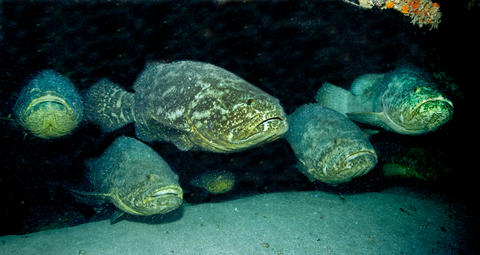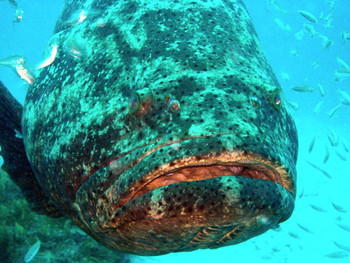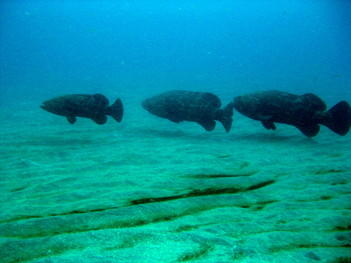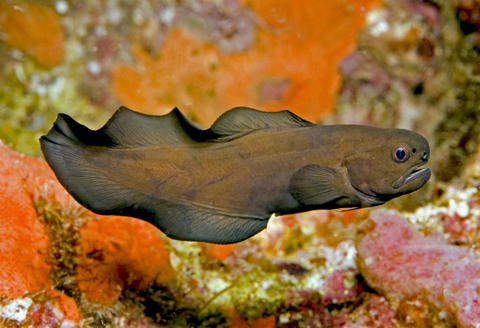Mike Phelan
As one of REEF’s most active surveyors, Mike Phelan contributed 1,485 surveys to the REEF database, was a member of the Advanced Assessment Team, participated in many REEF monitoring projects, often taught fish ID. Mike’s enthusiasm for fishcounting was infectious. We are saddened to share the news that Mike passed away in September 2012 in Jupiter, Florida.
REEF co-founder, Paul Humann, remembers Mike’s unsurpassed passion for marine life and conservation. "REEF's database is much more meaningful thanks to Mike's contribution of nearly 1,500 fish surveys over the last 14 years. Working with State of Florida officials he did a great deal of volunteer research on the Goliath Groupers and wrote several scientific reports. His information was used as part of the government decision-making process to continue the Goliath's protection as an endangered species.”
“On one of his last dives he counted 114 Goliath Groupers in a single aggregation, the largest ever recorded. As a personal friend, I along with everyone that knew Mike will miss him greatly - as will the Goliath Groupers who have lost one of their staunchest advocates."

Photo by Paul Humann
REEF Director of Special Projects and original Executive Director, Lad Akins, regarded Mike as a top-notch team member and an all-around great person. "Mike Phelan was a friend of REEF and a friend of mine. If I had to pick a team for anything, Mike would be one of the first I’d pick. He was a joy to be around – always quick in wit and a true professional in his approach to almost any situation.”
“I first met Mike on a REEF fish survey trip in 1998. He quickly became a mainstay of REEF fish survey activities and achieved Golden Hamlet status with over 1,000 fish survey dives. His dedication to protecting marine resources, especially Goliath Grouper, was widely known and his efforts were far reaching in helping to better understand this keystone species. Mike was certainly a member of the REEF family and we’ll miss him much."


Photos by Mike Phelan
If you’d like to read more about Mike’s efforts with REEF, you can the June 2011 Member Spotlight featuring him below:
Mike Phelan has been a REEF member since 1998, is a member of our Golden Hamlet Club, and is a member of the Advanced Assessment Team in the Tropical Western Atlantic. In addition to being an active REEF surveyor, Mike has been documenting an annual aggregation of Goliath Grouper in Florida. Here's what Mike had to say about REEF:
When and how did you first volunteer with REEF?
I read an article in Skin Diver Magazine over 12 years ago. Shortly thereafter, I signed up for a REEF Field Survey trip to Saba and several other nearby islands on a live aboard. Since then, I have participated in seven REEF Field Surveys and several REEF Advanced Assessment Team surveys in the Florida Keys. The most memorable was my trip to St. Vincent. I was fortunate to add several fish to my species life list including the illusive Black Brotula. My favorite part of being a REEF member is interacting with fellow citizen scientists.

Black Brotula - Photo by Ned Deloach
What inspires you to complete REEF surveys? What is the most interesting thing you’ve learned doing a REEF fish survey?
I believe that REEF members occupy a somewhat unique position to make a dive that really counts. I find that the focused experience of completing a survey opens up your eyes to the entire reef ecosystem including fish behaviors, the surrounding benthic community, and both species presence and absence. I have been a diver for over 44 years, and I can state with certainty that you need to enlarge your diving hobby beyond “blowing bubbles” to keep that inquisitiveness that attracted you to diving in the first place.
Do you dive close to where you live, and if so, what is the best part about diving there?
I live in SE Florida and most of my diving takes place on the off-shore reef system of Jupiter, Florida. Jupiter is a unique location. It is the only known aggregation and spawning site for the Goliath grouper (Epinephelus itajara) in the SE United States. In the late Summer, aggregations of 30-50 Goliath groupers can be seen. Since the species was almost fished to extinction in the late 1980s, it is a privilege to witness its repopulation on the reefs of Florida. Jupiter is also a major nesting site for three species of sea turtle (Leatherback, Loggerhead, and Green). In the Spring and Summer, the reefs abound in turtles. They are very cool animals. Lastly, there is a Winter aggregation of lemon sharks (Negaprion brevirostris) and seeing them is quite a thrill.
What is the most fascinating fish encounter you’ve experienced?
While bluewater drift diving in the Gulf Stream near Jupiter, I sighted a large Sailfish that turned sharply upon sensing me and thereby displayed its sail. Last year, I was able to see the Flashlightfish in a cave at night in the Solomon Islands. The flashing light was very disorienting since you were hovering in completely black water while the blinking lights of about 30 fish turned on and off. The number one fish that I would like to see is the Sawfish (Pristis pectinata).
Do you have any surveying, fishwatching, or identification tips for REEF members?
My recommendation for all fish surveyors is to slow down and let nature emerge right in front of you. Carry a point and shoot type camera to aid in identification after the dive. This can be very helpful with the smaller gobies and blennies.
In your opinion, what is the most important aspect of REEF’s projects and programs?
By far, the database containing the fish and sea turtle sightings gains ever more importance each year. There really is no other information source on the planet containing the number of reported survey dives with such a broad geographic scope.
